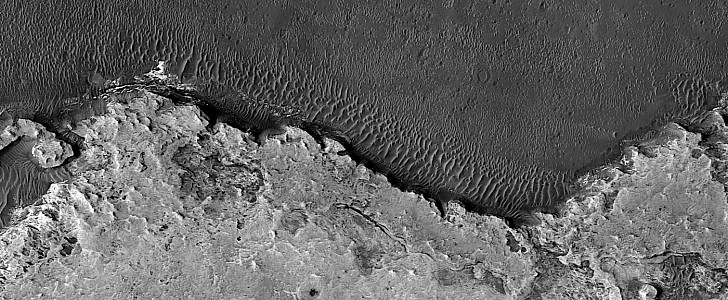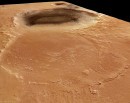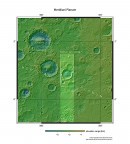A quick, uninformed look at the image we have here might leave one with the impression they’re looking at an overhead view of some spectacular shoreline here on Earth, a picture shot in black and white for some aesthetic reason. That couldn’t be further from the truth.
The image you’re looking at was indeed captured from above. It doesn’t show Earth, of course, but rather a tiny portion of a Martian region called Meridiani Planum, as seen from an altitude of 271 km (168 miles).
That’s how high the Mars Reconnaissance Orbiter was spinning back in 2020, when this image was captured with the help of the HiRISE camera, the main supplier of all great Mars orbit photos for decades.
What we’re looking at here appears at first as a very steep shoreline, bathed at its base by the calm waters of the Red Planet. But that’s, of course, only an illusion, or at best a glimpse into how the past of the neighboring planet might have looked like.
As per NASA and University of Arizona scientists working with the HiRISE, what we’re looking at is in fact a collection of an iron oxide called hematite, rocks, soil, and the dark basaltic sand that forms the apparent waves at the base.
A spectacular view, like the many the Meridiani Planum has to offer, some of which we’ve featured here not long ago (and we’ll probably do some more, as HiRISE keeps sending back tons of amazing photos of the place).
The region is believed to have once harbored hot springs and liquid water, and this is why it became the main target of the Opportunity rover, which landed there in 2004, and died, also there, in 2019. But not before visiting no less than nine impact craters, and significantly advancing our knowledge of the place.
That’s how high the Mars Reconnaissance Orbiter was spinning back in 2020, when this image was captured with the help of the HiRISE camera, the main supplier of all great Mars orbit photos for decades.
What we’re looking at here appears at first as a very steep shoreline, bathed at its base by the calm waters of the Red Planet. But that’s, of course, only an illusion, or at best a glimpse into how the past of the neighboring planet might have looked like.
As per NASA and University of Arizona scientists working with the HiRISE, what we’re looking at is in fact a collection of an iron oxide called hematite, rocks, soil, and the dark basaltic sand that forms the apparent waves at the base.
A spectacular view, like the many the Meridiani Planum has to offer, some of which we’ve featured here not long ago (and we’ll probably do some more, as HiRISE keeps sending back tons of amazing photos of the place).
The region is believed to have once harbored hot springs and liquid water, and this is why it became the main target of the Opportunity rover, which landed there in 2004, and died, also there, in 2019. But not before visiting no less than nine impact craters, and significantly advancing our knowledge of the place.










